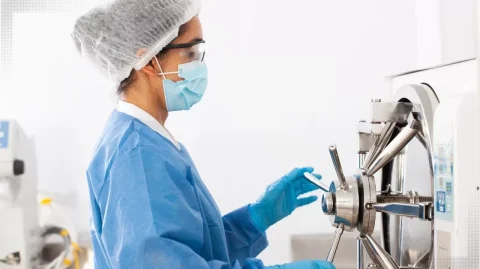High-pressure autoclave reactors conduct chemical reactions under high pressure and sometimes high temperatures. These conditions allow reactions to proceed faster or make them possible when normal conditions wouldn’t work. But how do scientists and engineers control these reactions inside a high-pressure autoclave? Two key concepts help in managing these processes: thermodynamics and kinetics. These factors determine the success and efficiency of the response, and understanding them can make a big difference in reactor operations.
Let’s break down these terms and understand how they impact autoclave reactor operations.
Thermodynamic Factors: How Energy Affects Reactions
Thermodynamics deals with energy and heat in a chemical reaction. When discussing thermodynamics, we focus on whether the reaction can happen and how much power is needed or released during the reaction.
Key Concepts:
- Reaction Feasibility: Thermodynamics tells us whether a reaction is possible under specific conditions. For example, some reactions only occur at high pressures and temperatures because they need extra energy to break bonds between atoms.
- Enthalpy is the measure of the heat energy absorbed or released in a reaction. To manage the energy needed, the temperature can be controlled in a high-pressure autoclave.
- Gibbs Free Energy: This tells us whether a reaction will happen spontaneously (on its own). The reaction can proceed under the given conditions if the value is negative. High-pressure autoclaves allow us to change temperature and pressure, adjusting the Gibbs Free Energy to favor the reaction.
Example: We want to produce a specific chemical using an autoclave reactor. The thermodynamic calculations tell us we must increase the pressure to make the reaction feasible. Without these high-pressure conditions, the reaction might not proceed.
Impact on Autoclave Operation:
- Pressure and Temperature Control: Thermodynamic factors influence how we set the pressure and temperature in the autoclave to ensure the reaction happens efficiently.
- Energy Management: Managing the heat generated during the reaction (exothermic reactions release heat) is crucial for safety and efficiency
Kinetic Factors: Speed of the Reaction
While thermodynamics tells us if a reaction can happen, kinetics tells us how fast it will happen. Even if a reaction is thermodynamically favorable, it might proceed too slowly if the kinetic factors aren’t right.
Key Concepts:
- Activation Energy: It is termed as the energy required to start the reaction. In a high-pressure autoclave, increasing the temperature can lower the activation energy, making the reaction happen faster.
- Reaction Rate: Kinetics focuses on how fast the reactants (starting materials) turn into products. Higher pressures and temperatures in autoclave reactors usually speed up reactions.
- Catalysts: Sometimes, we add a catalyst to lower the activation energy and increase the reaction speed without extreme conditions.
Example: Suppose you want to make a product in a high-pressure autoclave, but the reaction takes too long under normal pressure. Increasing the pressure and temperature can reduce the activation energy, making the reaction happen faster.
Impact on Autoclave Operation:
- Time Efficiency: Kinetic factors are crucial when you must quickly complete reactions. Operators can ensure the process happens within a desired timeframe by adjusting pressure and temperature.
- Product Yield: Faster reactions can increase the amount of product you get, making the process more efficient and cost-effective.
Balancing Thermodynamic and Kinetic Factors
In high-pressure autoclave reactor operations, thermodynamic and kinetic factors must be considered together. Sometimes, a reaction may be thermodynamically favorable but too slow (kinetically controlled). Other times, a reaction may happen quickly, but the conditions may not be favorable thermodynamically.
How to Balance:
- Optimize Conditions: An autoclave’s pressure, temperature, and reaction time can be adjusted to find a balance between thermodynamic feasibility and kinetic speed.
- Use of Catalysts: In some cases, catalysts can help speed up reactions without needing extreme conditions, saving energy and time.
- Monitoring Reaction Progress: Engineers closely monitor thermodynamic conditions (like temperature and pressure) and kinetic factors (reaction rate) to ensure the process is efficient and safe.
Conclusion: Importance in High-Pressure Autoclaves
In high-pressure autoclave reactors, thermodynamic and kinetic factors has a crucial role in nailing the success and efficiency of a reaction. By carefully controlling temperature and pressure and sometimes using catalysts, operators can ensure that reactions proceed as intended—both quickly and safely.
In summary, understanding thermodynamics helps you know if a reaction is possible, while kinetics lets you make the reaction happen faster. Managing these factors ensures that high-pressure autoclave reactors can be used to their full potential in research labs or large-scale industrial production.
To purchase this product , please follow the links below-
1. Techinstro
2. Shilpent






